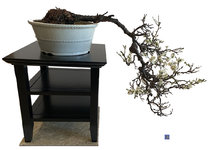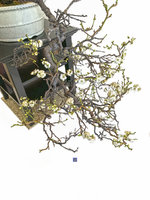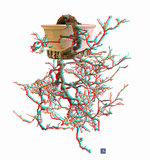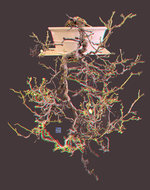Trueblackpercula
Shohin
I simple love everything about this tree. Wow .......care to share some of your bending and shaping techniques? Also please share more pics
michael
michael
Thank you so much for all the information and at 32” long I don’t feel bad now as mine is about the size as well. I do plan on bending and twisting mine even though the branches do get stiff as the tree grows. But after seeing your tree I may take a step back and see what nature has to offer.Almost all of this tree was shaped by clip and grow. I have used wire but it is mostly to keep branches away from each other. Guy wires. The branches on this contorta are extremely stiff, once they are hardened off. Very early in the ume's development, I tried to bend a branch and broke it. The bend I was attempting was trivial, but...
In general, on this tree, I don't wire. Here's the reasoning: what makes prunus mume so attractive is the contrast between the very delicate flowers and the very rugged, craggy framework of the rest of the tree. Unless you are a real wizard at wiring, there are going to be curves in your branches. You want hard angles, abrupt changes in direction, a real rough quality. The contorta variety of prunus mume already has a lot of that quality built in.
As it stands now, my ume is about 32 inches wide from the end of the rootball to the apex. It's not a small tree. While wiring is very possible, it's still not desirable because of all the aforementioned reasons. At least in terms of my design concepts.


Great photos Fred. Those branches are really getting craggy and very naturally wild-looking.View attachment 350470
This picture shows my prunus mume contorta from the side, as most cascade bonsai are photographed. There is some distortion in the picture because of the width of the image. Overall, I felt the distortion furthers the impression of a tree on a cliff so I didn’t edit it out.
The most significant quality of a picture taken of the ume in flower is that in winter, the branches of this tree are bare. That means that, depending on your point of view, you can see completely through the bonsai from front to back. It also means that with thoughtful display, you can create the impression of very dense flowering when in fact the flowers might be fairly sparse, as you see here:
View attachment 350471
Thanks, so much, Brian!Great photos Fred. Those branches are really getting craggy and very naturally wild-looking.
 This picture is an optimized anaglyph. Use red/cyan glasses to see the 3D.
This picture is an optimized anaglyph. Use red/cyan glasses to see the 3D.Every fall, as the weather cools and the sun shines less and less, I defoliate my Ume, so I can see exactly what I have, and also to check how the flowering buds are developing.
Earlier this week, I finished defoliating. Happily there are many flowering buds and they look good. I still have some questions about the final shape I want to give my Ume, but those may wait until I see how many flowers actually develop.
This year, the trunk, slim though it is, increased in girth. I know this because the bark of the tree cracked in many places. This increases the appearance of age, as well as indicating growth.
View attachment 403348This picture is an optimized anaglyph. Use red/cyan glasses to see the 3D.

Very nice!View attachment 414403
My Contorted White Japanese Flowering Apricot bloomed on January 1st, welcoming in the new year. The two flowers are in the upper left area of the branches, and the lower, center.
This picture shows how colorful this bonsai can be without the flowers. The flower-bearing shoots are green while the rest of the tree is gray, at least at this time. At other times of the year the trunk is nearly black.
Part of the Ume’s popularity is that it, like the flowering quince, has flowers on bare branches. I suspect another reason is that the Ume is not easy to grow, and to achieve ramification is even more difficult, once the tree is in a bonsai pot. Any small achievement in the list of bonsai positives, is a super positive.
The Ume is very aggressive in its vitality. Notice that the descending deadwood at the very bottom of the tree has a small green shoot. Perhaps a flower will grow?
This picture is an optimized anaglyph. Use red/cyan glasses to see the 3D.
Wish that I did as I feel I am missing out on the action.It would be nice to post normal pics. Not everyone has a pair or 3d glasses.
That's true, except the paper glasses I use myself are so cheap. This is what I use:It would be nice to post normal pics. Not everyone has a pair or 3d glasses.
How do you make it? Do you use an actual stereo camera? My grandfather was one of the names in stereophotography last century, and I am still sad to know I never knew untill it was too late.an optimized anaglyph.
My grandfather was one of the names in stereophotography last century, and I am still sad to know I never knew untill it was too late.
300K glass negatives is what was on the attic.. Took years to ge them sorted and donated to all the city archives.boxes of slides
